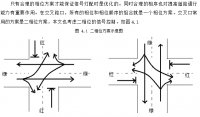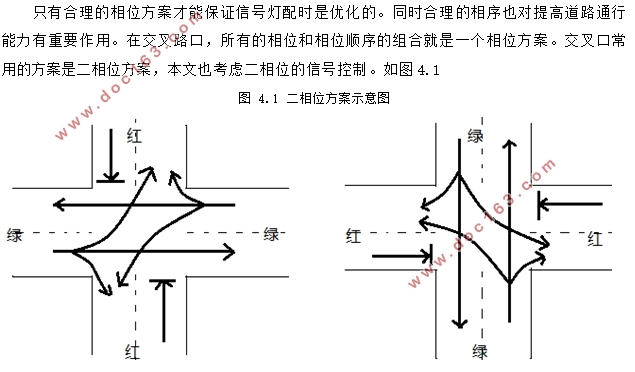关于城市交通信号灯配时系统的研究

关于城市交通信号灯配时系统的研究(论文10000字)
摘要:信号灯在交通系统中扮演了重要的角色,目前普遍应用的信号灯控制系统采用了定时控制的办法,该方法不能适应车流实时变化的情况,在车辆较少的情况下,浪费了时间,车辆较多时,又不能最大限度的使车流通过,造成严重的拥堵问题。
因此当务之急是建设一个效率高且安全的交通系统,所以本文旨在介绍一种交通灯实时配时系统,希望能提高道路通行能力,并在一定程度上解决城市道路拥堵问题。本文的采用的配时系统首先通过参数拟合的方法预测了车流,然后在此基础上改进了基于模糊理论的信号灯配时优化算法,并且通过实验证明该算法相对于传统算法减少了车辆延迟时间,提高了道路通行率,具有更好的控制效果。
关键词:交通流预测;绿信比;周期时长;最小二乘法;模糊控制
Research on Urban Traffic Signal Timing System
Abstract:In the traffic system,the traffic light plays an important role.The signal control system which is applied generally using a timing control system, the method can’t adapt to the change of traffic flows.When the number of vehicles is small, cars will waste time in this system, when there are many vehicles, the system can’t make all of the cars through the intersection, causing serious congestion problems. [资料来源:https://www.doc163.com]
Therefore, it is time to build an efficient and safe system.This paper aims to introduce a new real-time timing system,hoping to improve the road traffic capacity, and solve the problem of urban road congestion. In this paper, the timing system can predict the traffic flow by the method of parameter fitting. Then, we improved the timing optimization algorithm based on fuzzy theory. The experiment proves that the system reduces the delay time compared with the traditional algorithm, improve the road pass rate, and the algorithm with better effect.
Key words:Traffic flow forecasting, Split, Cycle length, Least squares, Fuzzy sets
[来源:http://www.doc163.com]

目录
摘要 3
Abstract 4
第一章 绪论 5
1.1课题研究背景 5
1.2国内外研究现状 5
1.2.1国外研究现状 5
1.2.2 国内研究现状 6
1.3课题主要研究内容和意义 6
1.4 本章小结 7
第二章 城市交通信号控制基本理论 7
2.1 交通信号控制基本概念和控制对象 7
2.1.1 交通信号控制的基本概念 7
2.1.2 交通信号控制的控制对象 7
2.2 交通信号控制方式及分析 8
2.3 主要评价指标 8
2.4本章小结 8
第三章 交通流预测 9
3.1 交通流预测目的与意义 9
3.2 交通流预测研究现状 9
3.2.1 国外研究现状 9
3.2.2 国内研究现状 9
3.3 基于参数拟合的交通流预测 10
3.3.1 最小二乘法介绍 10
3.3.2 模型建立 10
3.4 实例计算和分析 11
3.4.1 实例计算 11
3.4.1 实例分析 13
3.5 本章小结 13
第四章 信号灯配时优化 14
4.1 传统的信号控制系统 14
4.1.1 传统信号灯控制系统概述 14
4.1.2 传统信号灯控制系统的不足 14
4.2信号灯实时配时基本理论 14
4.2.1 信号灯配时优化的主要参数 15
4.2.2 平面交叉口介绍 17
4.3 基于模糊控制的信号灯配时优化 17
4.3.1 模糊控制理论 17
4.3.2 算法介绍 17 [资料来源:http://Doc163.com]
4.3.4 算法流程[17] 19
4.4 实验结果及分析 19
4.4.1 实验结果 19
4.4.2 结果分析 20
4.5 本章小结 20
第五章 总结 21
参考文献 22
致谢 23
